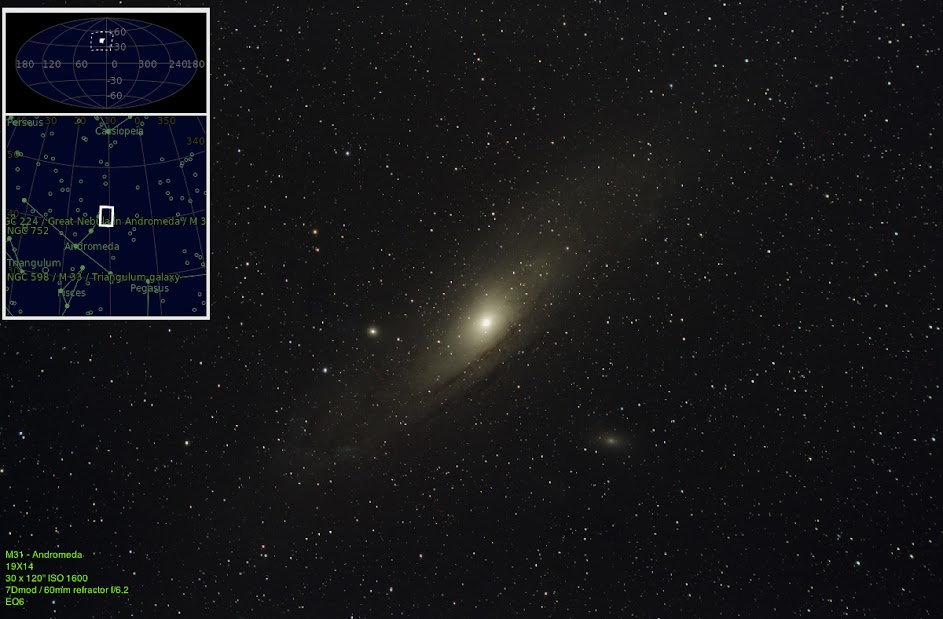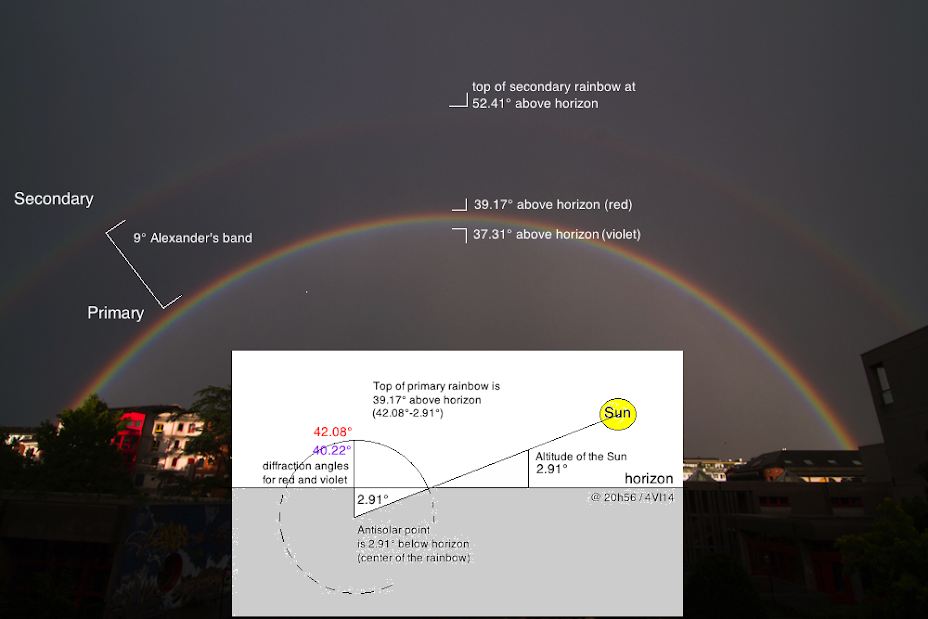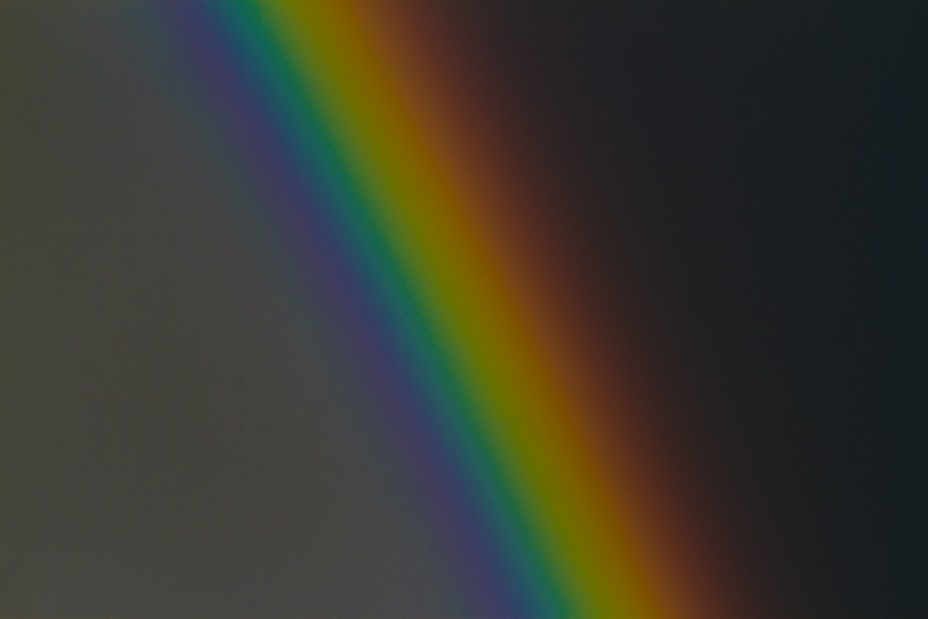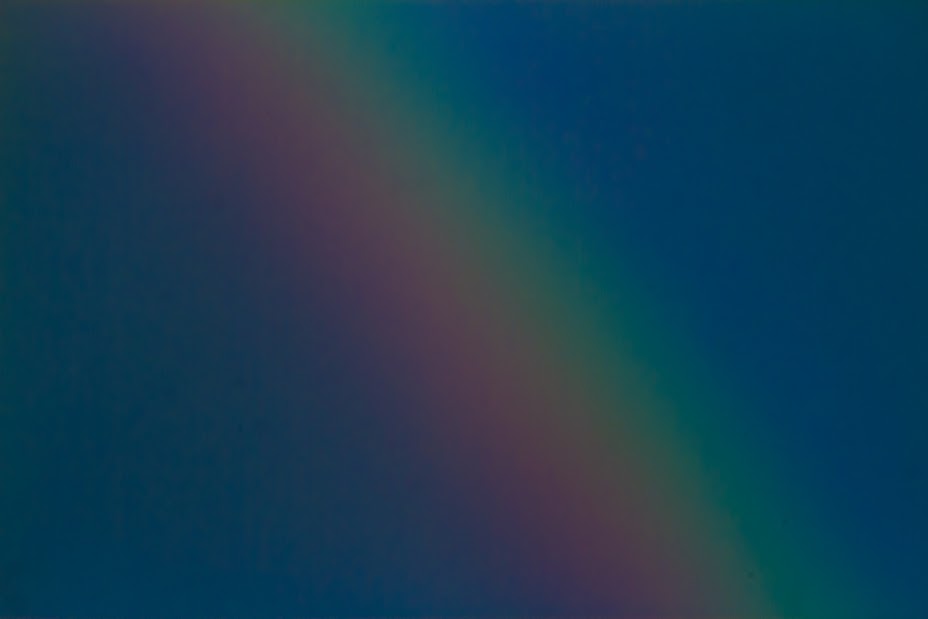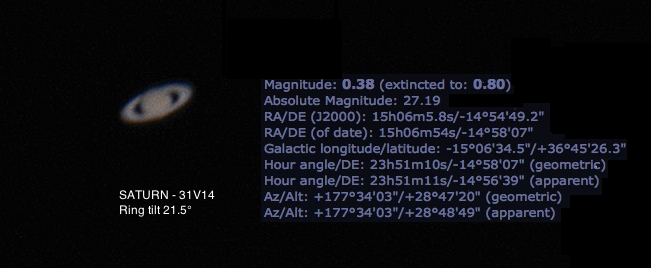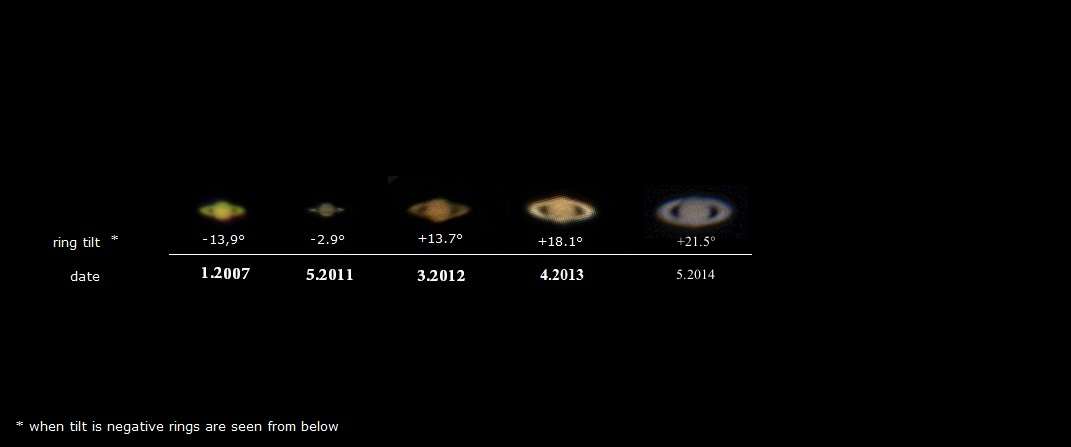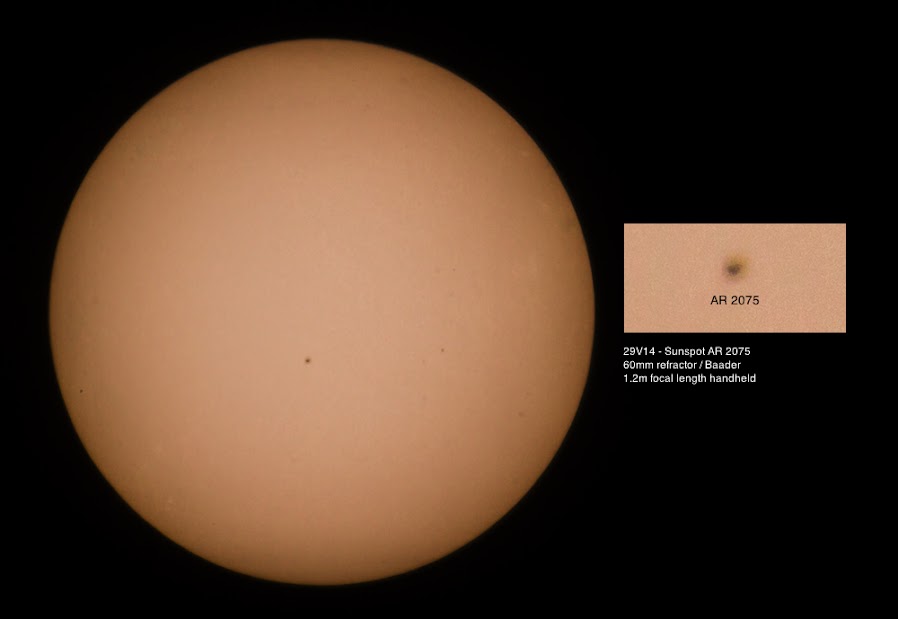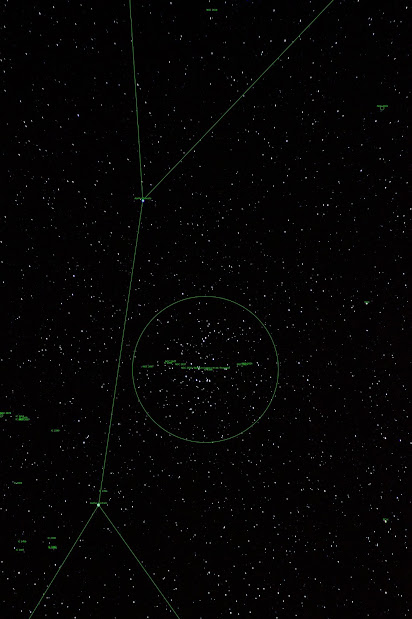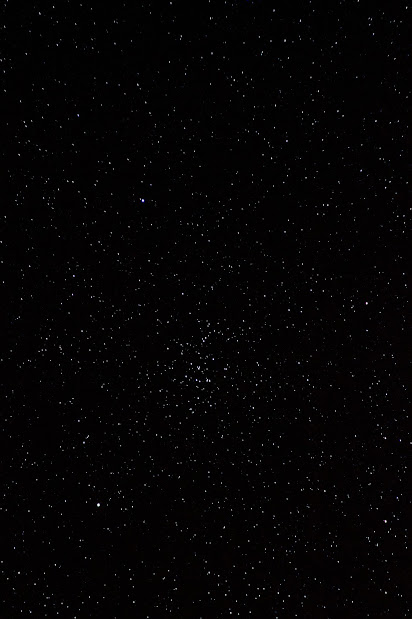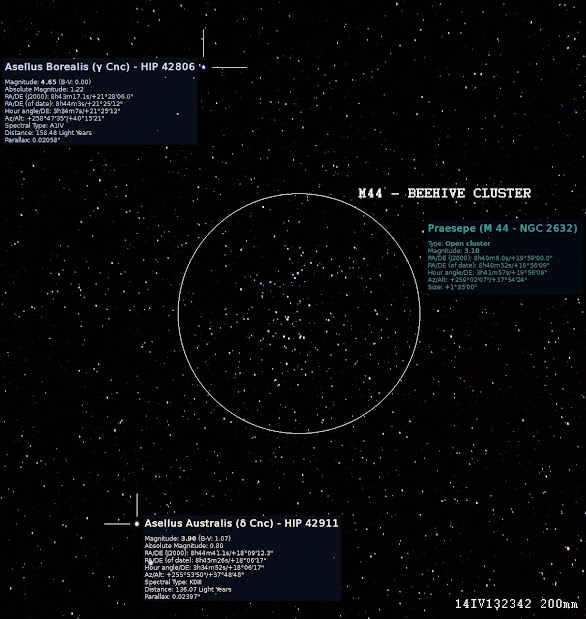M33 is 50 000 light years across.
This means that In the time light takes to travel from one end to the other, a (potential) humanoid species would have time to evolve from Neanderthals to individuals capable of recognising such light as being that of faraway star.
It's a spiral galaxy sometimes called the "Pinwheel", despite SIMBAD assigning this nickname to M101. Diffuse source at the extreme limit of naked-eye visibility, it's one of the critical sky-marks of the Bortle Dark-Sky Scale (2001).
It's 3mio ly away: when the light below left the galaxy, the first humans were evolving thanks to a cooling of Earth's climate.
 |
| M33 - Triangulum Galaxy |
Observation data (J2000 epoch)
Pronunciation /traɪˈæŋɡjʉləm/
Constellation Triangulum
Right ascension 01h 33m 50.02s[1]
Declination +30° 39′ 36.7″[1]
Redshift -0.000607 ± 0.000010[1]
Helio radial velocity -179 ± 3 km/s[2]
Galactocentric velocity -44 ± 6 km/s[2]
Distance 2,380 to 3,070 kly (730 to 940 kpc)[3][4]
Type SA(s)cd[2]
Mass 5 × 1010[5] M☉
Number of stars 40 billion (4×1010)[6]
Apparent dimensions (V) 70.8 × 41.7 moa[1]
Apparent magnitude (V) 5.72[1]
